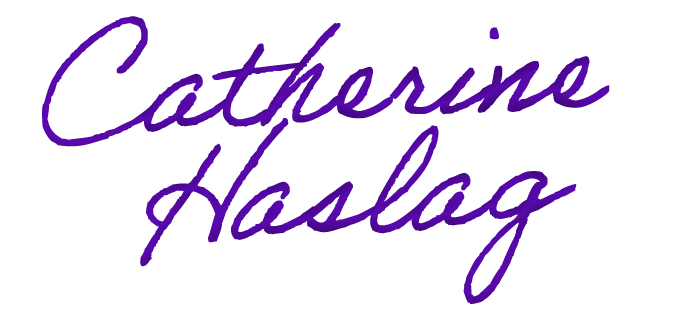Environmental Chemistry Project Guidelines
Objectives
- Report on a current topic in chemistry. Assess the pros and cons of this topic and its potential benefit/impact on the environment.
- Complete analysis of scientific findings on a current topic in chemistry and explain any sources of possible bias and uncertainty found.
- Examine and analyze this selected study for underlying assumptions and/or bias on the researcher’s part, suggest an alternative perspective that disputes it, and/or explains the issue, solution, or finding from at least two points of view.
- Explain their (the student’s) stance, using supporting information, about the current topic in chemistry.
- Apply basic chemistry knowledge to a real-world situation.
- Determine if a source is reliable.
- Evaluate a source for bias.
- Read scientific journal articles.
Introduction
Environmental chemistry is the study of chemical phenomena in the natural world. It involves the study of the sources, chemical reactions, transport mechanisms, and impacts of chemicals in the air, soil, and water, and their effects on human health. We have already discussed several environmental chemistry topics in this course through assignments, examples shared in lectures, and textbook readings.
You will be researching and reporting on a current environmental chemistry issue. You are responsible for researching and choosing your topic in this area. Think small when you are picking your topic. I don’t want this project to overwhelm anyone because they selected a large topic for their report. If you want to check with me to see if your topic is narrow enough, don’t hesitate to ask for help.
Figure 1: The video above discusses environmental chemistry more in-depth to help you better understand this project. I recommend you view this video before you pick a project topic.
You MUST clear your topic with me before working on your project. Please email me with your topic to get it approved. Only one student can present on a given topic, so email me as soon as possible to secure your topic. They are available on a first-come, first-serve basis. I will not provide students with a list of topics to choose from. It is your responsibility to identify a topic. Google is your friend.
I designed this project to be a fun and interesting assignment allowing you to study a topic you find interesting. Therefore, I encourage you to pick a topic you will enjoy learning about and have fun completing this project.
A rubric outlining the grading criteria and point value for this project is provided on Brightspace. This rubric is available on Brightspace at Assessments → Rubrics → Environmental Chemistry Project Rubric. It is also linked with the assignment folder for this project.
Please see your semester schedule for the due date for this project. You are expected to submit this project by the date indicated on the semester schedule.
Project Requirements
Part 1 – What are the causes, impacts, and chemistry of your chosen environmental chemistry topic?
You can choose to complete Part 1 of this assignment as a vlog or blog. I have posted a video to Brightspace demonstrating how to use Kaltura and MediaSpace, both provided to all Riverland students, to create a vlog.
If you choose to write a blog, you must create a free account at https://edublogs.org/. If you already keep a blog on another website, you can also post your blog there. Edublogs is a free blog website designed for teachers and students to use. You will write/create your blog post here. If you want to see a few examples of blog posts, you can check out my Edublogs site at https://chemmyslab.edublogs.org/.
Your submission should cover the following information:
- A summary of your chosen topic. This should introduce the reader to the topic and provide them with a basis of knowledge that the rest of your submission builds on.
- A brief overview of the chemistry involved in your topic of choice. This may include explaining the chemistry behind how your chemical works or is produced. This chemistry should relate directly to at least one topic discussed in this course.
- Discuss any pros and cons for your topic of research.
- If you are unsure how to identify the pros and cons of your topic of choice, please see your instructor.
- Be sure to provide sufficient detail. Don’t just provide a quick bullet point of the pros and cons and not explain. A sentence or two is usually all you need to elaborate on.
- Discuss possible benefits and impacts this source of energy has on the environment. Some of these may appear to be pros and cons (and may even be included in the list of pros and cons); however, details regarding these benefits/impacts should be outlined in your submission.
- What are possible solutions to addressing this environmental chemistry issue you found in your research?
- Explain, using supporting information, your opinion on the use of your topic. For example, how critical is this environmental issue? Do you think the solutions are adequate to address the issue you discussed? Why or why not? What other ideas do you have on this topic?
Part 2: Citing and Evaluating Sources
Part 2 is all about your sources. In a Word document (or using similar software) you will cite your sources and evaluate them for bias, uncertainty, reliability, and source type.
Below are the guidelines for citing and evaluating sources for this project. You will use the information we learned about evaluating sources for reliability and validity we discussed in Module 1 of this class. Please reference these materials when evaluating your courses and determining their reliability. I linked this lesson from Module 1 so you can easily review this material.
Be sure to properly cite your sources using APA or MLA format in a Word document. If you need help properly citing your sources, see Purdue’s Online Writing Lab (OWL) or the University of Auckland Referen©ite page.
Below are guidelines for evaluating and citing your sources for this project:
- You need to cite at least 5 sources for the information in your project.
- None of these resources can be Wikipedia or another encyclopedia-type website. Use these sites as a jumping-off point of your research, not as cited sources.
- At least one of these sources should be a peer-reviewed scientific article. This can be accessed through the Riverland Library, the local public library, or via an online database. An excellent resource for this are the journals highlighted in Figure 2, available through the Riverland Library.
- At least one of these sources should be a secondary source, such as a newspaper or other science article accessed through the Riverland library or the local public library.
Figure 2: Primary, peer-reviewed journals provided through the Riverland Library that could be useful for this project. Click HERE to go directly to this section of the Riverland Library website.
- Your textbook doesn’t count as a source for this project.
- Be sure to properly cite any multimedia aspects you use as a source (images, videos, graphs, etc.)
- Below each cited source, include a short annotation with the following information:
- Identify if your source is a primary, secondary, tertiary, popular source, etc.
- Explain any bias identified in this source. This refers to your resources, not your personal bias. If a resource is firmly for or against something, that could indicate bias. If bias is identified, explain the differing points of view the justification provided for each stance.
- Explain any areas of uncertainty (questions that were raised) identified from this source. If no areas of uncertainty were raised, then you must state so.
- Tell me why you chose to use this source in a sentence or two. Is it reliable? Can you consider the data presented in this source as valid? Why or why not?
Citing your sources for this assignment is a requirement. If you do not cite your sources, I will consider your project plagiarized, and you will receive a zero.
Be sure to provide a list of your sources at the end of your blog post and your list of references and their evaluation to your instructor. For an example of referencing your resources at the end of your blog, please see one of my blog posts at https://chemmyslab.edublogs.org/.
Do not include the analysis of your sources for bias, uncertainty, reliability, or type of source in your blog. This needs to be completed in a separate Word document.
Other requirements for your vlog/blog include:
- Your submission should be organized and titled. Arrange the information about your topic in a logical manner that is easy for someone to follow and understand. (i.e., chronologically, topically, etc.). The reader should follow your blog/vlog and clearly understand your topic and the information you are trying to communicate.
- Everything should be properly aligned if you type a blog. Text and images should not run over each other. Everything should be neatly and carefully arranged.
- You need to use at least two graphs, figures, or tables in your vlog/blog to provide a visual aspect and help the viewer better understand your topic.
- Be creative and make your submission visually appealing and interesting to the reader/viewer. You are in college. Your submission should reflect this.
- Plan ahead on this project. This isn’t something that can be thrown together the night before. Your grade will suffer for it.
Submitting this Assignment
Submit the following items to the assignment folder titled Environmental Chemistry Project Assignment Folder in Brightspace:
Submitting Part 1 – Link to blog or vlog
Please include a link to your vlog or blog at the top of your list of sources and their evaluation (Part 2) or copy/paste it into the text box provided for the assignment folder.
In Edublogs, you can access this link by clicking “Permalink” on the right side of the page and copy/paste either two links that appear in the highlighted areas in Figure 3.
In MediaSpace, be sure to “Publish” your video by setting the status to “unlisted” and saving before copy/pasting the link to your video. I explain how to do this in the video posted on using Mediaspace to create a vlog.
I recommend testing your link to make sure it works. Email it to a friend or family member and ask them to test the link. It is your responsibility to make sure your link works. If I cannot access your blog/vlog because your link doesn’t work, you will receive a zero on Part 1 of this project.
Figure 3: Obtaining a shareable link from Edublogs.
Submitting Part 2 – Citation and assessment of sources.
You must type the list of citations and their assessment using a program such as MSWord or GoogleDocs. This document can be uploaded as a .pdf, .doc, or .docx file.
If you upload a file format other than the ones listed above, I may be unable to open your submission. If I cannot open your submission, you will receive a zero for the portion of the assignment I cannot open.
It is ok to upload multiple files for this assignment.
Assessment
This project will be assessed using a rubric. The rubric for this assignment is available on Brightspace. Go to Assessments → Rubrics and select Environmental Chemistry Project Rubric from the list. If you have any questions at any time, please see your instructor for guidance. I am happy to help.
If you have any questions at any time during the preparation of your vlog/blog, please feel free to see me for guidance. My contact information and office hours are located at the top of the syllabus.


